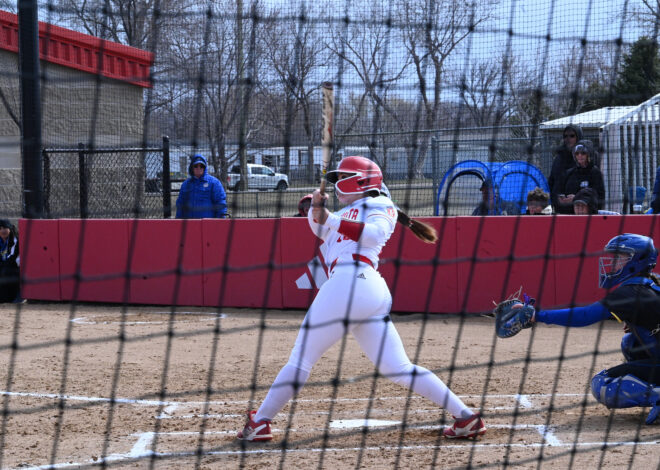
USD future educators leaving SD for bordering states
Senior Emily Anderson began student-teaching this semester to fulfill her education degree, and she couldn’t be happier.
Anderson is among about 150 USD students student-teaching around the region in order to earn their degrees.
Anderson was placed in South Sioux City, Neb., which is 40 miles from Vermillion.
“I was lucky enough to have gotten placed with someone who had all the qualities I said I was looking for,” Anderson said. “I said I wanted someone who was organized, creative and could help me with classroom management. My mentor teacher has all of that and more.”
USD’s student-teaching program allows education students the opportunity to gain experience instructing a classroom while still under the supervision of the university.
Generally, this year-long experience is the final requirement in obtaining a teacher’s certificate.
Robin Wiebers, assistant dean of the School of Education, said 40 school districts participate in USD’s student-teaching program, and about 150 students per year get the opportunity to student teach in those schools.
At the beginning of the process, a prospective student teacher chooses which hubs, or general areas, that they would like to work in.
Bailey Murphy, a senior and current student teacher, said student teachers have to list their top three hub choices and then write a letter requesting any specific schools within those hubs they want to be placed in and explain why.
“I had to write a letter requesting to be specifically in Le Mars, Iowa,” Murphy said. “So I just said I lived there and I planned on moving home so it would be convenient to be placed there.”
Unlike Murphy, who enjoys student-teaching 45 miles away from Vermillion, students that don’t want to commute to their student-teaching location and be closer to Vermillion face more of a challenge.
Vermillion’s small population means there aren’t a lot of student-teaching opportunities offered at each school. Students that wish to stay local have to give a reasonable explanation for why they should remain in Vermillion – such as having an athletic obligation to the university or being a member of a campus-led group.
Student-teaching in neighboring states like Nebraska and Iowa has become more and more common.
Wiebers said approximately 20 percent of USD students majoring in education last year accepted student-teaching positions in a state other than South Dakota.
The lack of local student-teaching opportunities may not be the only thing driving students to seek opportunities in other states.
Border states have long piqued the interest of South Dakota education majors because South Dakota has the lowest teacher pay in the country.
Both Murphy and Anderson plan to teach in Iowa or Nebraska after graduating, and said the low pay in South Dakota was a major factor in their decision.
Teachers’ advocate groups, educators and many citizens have been pushing government officials and lawmakers to do something about the state’s low teacher pay.
Gov. Dennis Daugaard has proposed a half-cent sales tax in South Dakota to increase the pay of teachers to a target average salary of $48,500. For South Dakotans, this means an extra 50 cents for every $100 spent.
Wiebers said this increase would be beneficial when recruiting South Dakota teachers.
“I personally support the governor’s proposal to raise teacher pay. There is a teacher shortage nationally. South Dakota is competing with other states to attract quality educators,” she said. “In order to retain and recruit these teachers, South Dakota needs to have a comparable salary to other states.”
Wiebers said 40 percent of USD education majors take teaching positions in other states.
Stephanie Kaiser, a 2010 USD graduate and education major, decided to stay in the state and teach at an elementary school in Tea.
Kaiser fully backs the proposed increase, and said the current teacher pay and hard work teachers do to earn their wages doesn’t add up.
“An increase in teacher pay is no longer a want, but a need. Because of South Dakota’s lack of funding, schools have been losing good teachers to bordering states,” she said. “Teaching doesn’t stop just because the students go home. It never stops. Not over the summer, not over winter break and not in the mornings or after school.”
Many, like Kaiser, will be eagerly awaiting to see their financial fate while the bill is discussed. Lawmakers in Pierre delayed the vote on this bill Tuesday, but Daugaard remains optimistic of its passing.
Kaiser said South Dakotans should support the increase because teachers work endlessly to provide children with a quality education.
“Teacher’s are rarely sick, and almost never take time off. Why? Because we have pride in our classroom and what we teach. Even teachers have that dream of the white picket fence,” she said. “But South Dakota’s teacher pay cannot pay for student loans, a mortgage, daycare, electricity, a car or even a phone bill. So while the residents of South Dakota debate an increase in taxes to support your child’s education, we as teachers will still be working hard for you and your child, and maybe that white fence.”


